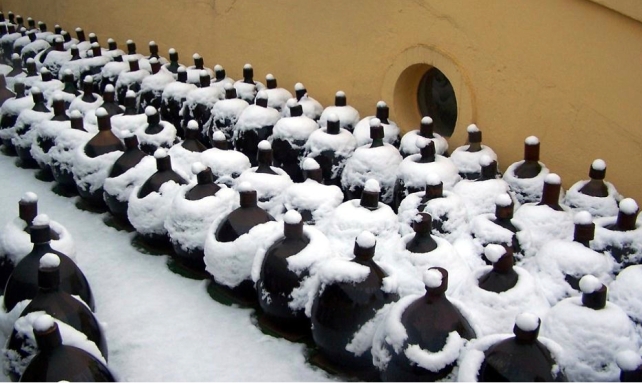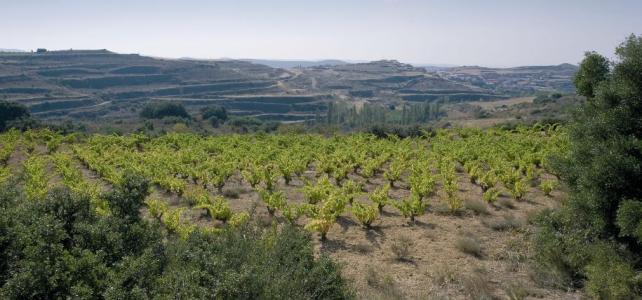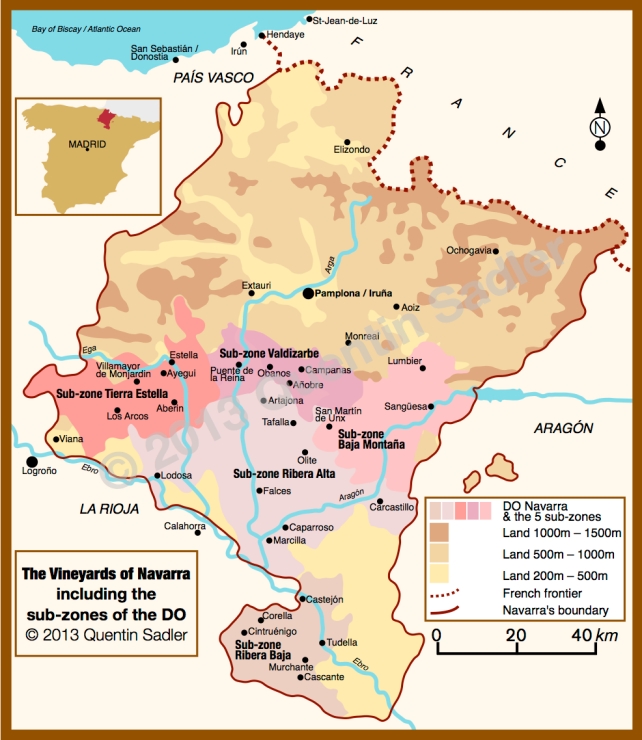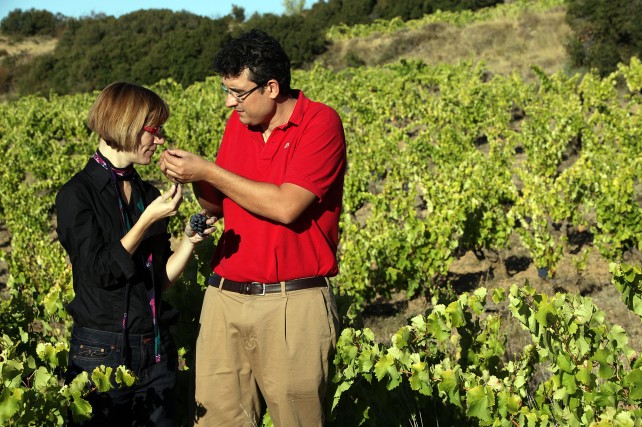I enjoy drinking a good rosé and enjoy its versatility – a nice rosé is fun on its own and can often be an inspired choice with food, especially the sort of things that I eat in the Summer.
What’s more I get a little tired of people claiming not to like rosé – what’s not to like exactly? I also find it a trifle annoying that quite a few people are somewhat disparaging about rosés, ‘they’re neither one thing, or the other’ is a refrain that I often hear. That is right, they are not white wines, they are not red wines, but something different – that is the point!
However, much as I enjoy them, I hardly ever think of them as being complex or great wines. Every month in London I present tastings to a group of tasters who are really interested in wines and I love showing them different things that I find on my travels. Well recently, just to see what people thought, I put on a tasting of rosés that were a bit more serious, and potentially more complex than the normal examples that people buy.
I had put the tasting together over several months, based on wines that I found in all sorts of different places. They were all made using the skin contact method – meaning the colour comes from the skins of black grapes as with a red wine. I wondered about putting in something like a Sauvignon Blanc Rosé from South Africa or New Zealand as those are made from blending a little red wine into white to give the colour, but I couldn’t show everything.
The tasting went well and surprised a lot of the tasters, so I decided to share the best wines with you.
The wines
 2014 Txakolin Gorria
2014 Txakolin Gorria
Txomín Etxaníz
PDO / DO Getariako Txakolina
País Vasco
Spain
Oh I do like Txakoli (or Txakolin they are not consistent with the naming). It is pronounced Chakoli and hails from the far north of Spain – you can read all about it in an article I wrote for Catavino. There are actually three Txakoli DOs and this wine comes from DO Getariako Txakolina, which is around the lovely fishing village of Getaria just 30km west of San Sebastian – which currently is my favourite place on earth! Txomín Etxaníz is widely considered to be the best producer of this beguiling wine. Formally established as a company in 1930, the family have been farming these hillsides and making wine since at least 1649.
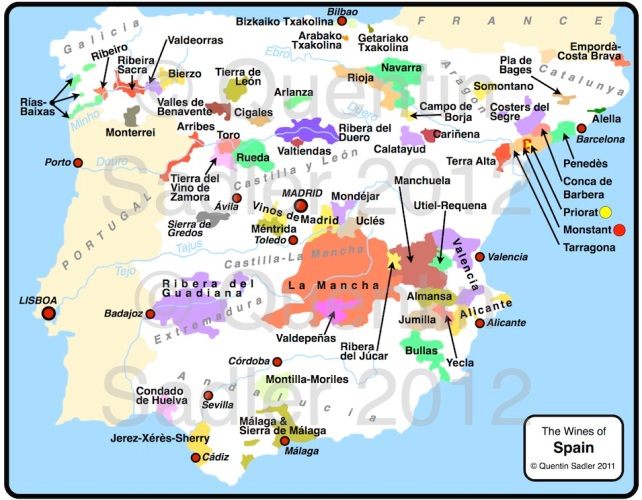
Wine map of Spain showing DO Getariako Txakolina to the East of Bilbao – click for a larger view – non watermarked PDF versions are available by agreement

The beautiful bustling fishing village of Getaria. The streets are full of bars and fish restaurants, while Txomín are just a couple of kilometres away on a hillside overlooking the village.
This rosé – the Gorria on the label strangely means red in Basque – is a blend of the two most important grapes, 60% Hondarrabi Beltza – a black grape – and 40% Hondarrabi Zuri – a white grape.
This was the lightest of the rosés, but a firm favourite with some tasters. The colour was pale, with a light cherry, strawberry, rose petal hue. The nose was delicate and restrained with that pure, seashore, salty and mineral Txakoli thing. It is bright, fresh and thrilling with lots of ripe cherry acidity, the merest sprinkle of pepper and some softer riper strawberry fruit too. It is light as sea air, but the flavour is deep and wonderful, so the wine feels elegant and satisfying. Perfect sun drenched terrace drinking, with the merest hint of something not quite bone dry – 91/100 points.
Also remember the Txomín white Txakoli is just about the best example of the type that you can try, it is available from The Oxford Wine Company for £15 a bottle.
For UK stockist information contact Moreno wines.
For US stockist information click here.
 2013 Mazza Bastardo Rosé
2013 Mazza Bastardo Rosé
Mazza Wine
GI Geographe
Western Australia
Bastardo is a little used and somewhat unloved grape variety from Portugal, but David Mazza has found a way to make a lovely wine from it, by making a rosé. David is one of my most exciting discoveries of the last year or so. He is a lovely guy who farms a tiny estate in Western Australia, only grows Iberian grape varieties and makes superb wines – you can read more about him here.

Wine map of Western Australia, Mazza are to the south and east of Bunbury, roughly where the G, in Geographe, is – click for a larger view – non watermarked PDF versions are available by agreement
The nose offers rose petal aromas, some strawberries and cream notes, mineral earthy notes, some herbs and some pomegranate too.
The palate has lovely weight and a creamily ripe texture that caresses the palate with soft red fruit with an underlying orange acidity with red fruit highlights. There are some light spices and Mediterranean herbs too. The acidity is perfectly judged, making the wine fresh, lively and clean without being in the least bit tart.
There is a fair bite of tannin for a rosé, just enough to give some elegance and structure, and a long finish that delights with redcurrant and cranberry fruit. This is a really satisfying and fine rosé of exceptional quality, it is not exactly light weight, but neither it is it heavy, but it is refreshing and lively. A fine and complex rosé – 92/100.
Available in the UK from Berry Bros and Rudd for £17.50 per bottle.
 2015 Majioli Rosato
2015 Majioli Rosato
Tenute Sella
PDO / DOC Coste della Sesia
Piemonte
Italy
Tenute Sella from northern Piemonte – Alpine Piemonte if you will – is still run by the family who founded it in 1671. They farm in the DOCs of Lessona, Bramaterra and Coste della Sesia and their buildings, cellars and vineyards are spectacular as you might imagine. They have a beautiful palazzo style building, while the Alps provide a stunning backdrop to the vines. Their main grape is Nebbiolo, but they have Vespolina, Croatina and Erbaluce too and make brilliant wines, including the best Nebbiolo rosé I have ever tried, so I put it in the tasting.

Wine map of Piemonte in my new cleaner style – click for a larger view. Non watermarked, high resolution versions are available for a fee.
This rosé is pure Nebbiolo and from 45 year old vines, old vines helps give depth and concentration to the wine. The vineyards are in the two ‘Cru’ appellations, Lessona (95%) and Bramaterra (5%), which is why the wine is labelled Coste della Sesia, as that is the wider area. The Bramaterra component is made by bleeding some juice off their red wine while it is fermenting. The Lessona component gets 36 hours cold soak pre fermentation to help extract flavours and complexity. The wine has malolactic fermentation and has a 6 month ageing on the lees in tank.
This has real Nebbiolo character on the nose, with earthy and rose petal notes, blood orange, cranberry and spice too. The palate is quite full, with some weight and intensity and texture – those lees? It is also very tasty with lots of rich red fruit, that twist of bitter orange, some spice and a good fresh acidity and minerality making it lively. This is a fine rosé – possibly my favourite on the night – and it would go with all manner of dishes from salads and fish to veal and pasta dishes – 92/100 points.
I would also point out that everything I have tasted from Tenute Sella is of very high quality.
Sadly right now there is no UK representation for Tenute Sella – come on wine trade, snap them up!
They are represented in the US by Rosenthal Wine Merchant / Mad Rose Group in New York.
 2014 Chêne Bleu Rosé
2014 Chêne Bleu Rosé
Chêne Bleu, Domaine de la Verrière
PGI / Vin de Pays de Vaucluse
Rhône
France
I love showing wines from Chêne Bleu, because they are always so very good. It’s a beautiful estate in the rugged and isolated Mont Ventoux area just a few kilometres north of Gigondas and east of Séguret on the borders between the Côtes du Rhône and Ventoux. The whole project has been a labour of love for the owners Nicole and Xavier Rolet and I would recommend that you read the story in my post here. The estate is farmed organically and in conversion to biodynamic. The secret is the height, the vineyards – there are only 30 hectares of them, sit at between 550 and 630 metres above seal level – very high for Europe – where the hot Mediterranean air is cooler and the nights are distinctly cool, which makes the wines fresher than you would expect – so finer. On top of all that they hand harvest and sort the grapes meticulously – their attention to detail shows.
Their rosé is a classic southern Rhône blend of 65% Grenache, 30% Syrah and 5% Cinsault and it spent a very short time in oak barrels to add complexity.
The colour is lovely, not deep, not place, but bright and appealing. The nose offers some delicate spice, rich citrus and pungent red fruit, while the palate is pretty full, with rich soft red fruit, refreshing acidity, concentrated fruit, a light spicy oak character and a silky, textured mouthfeel. Again perfect as n aperitif or with any Mediterranean style meal – 92/100 points.
Available in the UK for around £19 a bottle from Waitrose Cellar (online)
For US stockist information click here.
 2013 Château Brown Rosé
2013 Château Brown Rosé
Château Brown
Graves / Pessac-Léognan
PDO / AOC Bordeaux
France
I visited Château Brown once, it is a star estate in the Graves region and always delivers great wines and value for money. It has a checkered history though and was going through a bad patch in the 1950s – in fact there were no vines then – which is why it is not a Grand Cru Classé de Graves. Since 2004 the estate has been run by Jean-Christophe Mau and the quality of the wines has improved dramatically. There are 29 hectares of vines on the famous gravel – Graves – soils and nowadays they use sustainable viticulture to ensure balance and biodiversity in the vineyard – so much so they even keep a colony of bees.
They make lovely reds and a lot of their reputation has been built on their fine, rich, barrel aged white wines – both of these are AOC Pessac-Léognan. The rules of the appellation do not allow for rosés though, so this has to be labelled simply as AOC Bordeaux, but the quality is far higher than this relatively humble provenance would lead you to expect.
This rosé is a 50/50 Cabernet Sauvignon and Merlot blend, hand harvested, de-stemmed and macerated on the skins for 4 hours, which gives the subtle and pale colour. After a cold fermentation the wine was aged for 4 months in second use oak barrels with some lees stirring for extra texture and complexity.
The colour is more peach than pink with redcurrant fruit notes and something nutty and mineral too. The palate is seductively textured and promises a great deal, but the wine has to be treated more seriously than rosé normal are, serve it lightly chilled rather than cold and open it in advance – perhaps even decant it, all things I found out by mistake as the wine really only started to show its form after everyone had gone home!
Available in the UK for around £33 a bottle from Hedonism Wines.
 2011 Chivite Colección 125 Rosado
2011 Chivite Colección 125 Rosado
J. Chivite Family Estates
PDO / DO Navarra
Spain
All my working life I have been fond of the wines of Navarra, there is great quality there and great value too. I never really understand why they are not more widely available in the UK. It is a beautiful place, full of passionate wine producers. Production is nothing like the scale of neighbouring Rioja, so it remains attractively rural and the producers are essentially farmers – read my piece here for an overview and here, here, here, here and here about specific producers.

Map of Navarra – click for a larger view. High-res non-watermarked versions of my maps are available by agreement.
The Chivite family have been growing grapes and producing wine in Navarra since 1647 – which as I often joke to my students, is just before lunch in Spain! They are without doubt the most famous and leading estate in the region and are still owned by the founding family – indeed the current Julian Chivite is the 11th generation of the family to run it. They produce several ranges of wines, all good, even their more entry level Gran Fuedo wines from the warm deep south of Navarra. In recent years though they moved production of their top wines to their Finca Granja de Legardeta in the cooler Navarra Tierra Estella sub-zone – just a little bit south of Estella on the map. This area is influenced by the Atlantic and is pretty high too, so is cooler than further south, which gives a nice long ripening season to allow the grapes to develop complexity, while maintaining freshness.
The Coleccion 125 range – which are all superb – was originally created to celebrate the 125th anniversary of the original Chivite winery in Cintruénigo in the south of Navarra, but is now a separate range from their own family vineyards. This rosé is made from 100% Tempranillo grapes, aged for 12 months in French oak barrels with occasional lees stirring.
The colour is amazing, like wild salmon, while the nose is quite lifted with red fruit, smoke and spice. The palate is quite textured and rich with lots of ripe cherry, strawberry and spice and light tobacco, together with some rich orange character. The acidity keeps it all fresh and juicy, while there is a touch of tannin. A fine, rich, dry rosé that needs food – I would love to try it with suckling pig, but can assure you that it’s marvellous with paella – 92/100 points.
So you see, rosé wines can be fine, they can be complex and they can be serious and when they are they can be delightful and great fun to drink too. All of these were dry, although the Txakoli had a tiny touch of fruit sweetness which made it rather gorgeous actually, and on the whole would be better with food than without. The next time you cook Mediterranean style food, be it paella, tapas, meze, slow cooked lamb or some grilled fish – try one of these wines, or something similar, with it. I think you will enjoy the combination.










